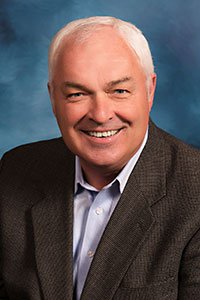by Doug Pontsler | Visual literacy is all about what you see, what it means, and what you do about it. Visual literacy has been taught in art education for years and provides a methodology for close looking. By recognizing that we are often influenced by our expectations of what we will see, our history in seeing things in the past, and a natural bias to pay attention to some things and not others we often look, but don’t see. (Image by geralt on Pixabay)
Every day, we ask our people to perform various tasks as part of our safety processes that require “seeing.” These tasks may be conducting a hazard hunt, completing a risk assessment, or performing an observation. Every day, we train our people to be proficient in the things that they do. It may be classroom training, on-line training, or on-the-job training. So, when was the last time any of us received training on how to see? If you are like most, never.
Sighted people are accustomed to seeing because they have been doing so their entire lives. We have confidence that when we look at something, we see what is there. However, what if that isn’t as true as we believe it to be? Is it possible that while we may look at something, we might not actually be seeing everything that we could be seeing? And what if there was a way to improve our ability to see the things that are right in front of us?
Visual literacy is all about what you see, what it means, and what you do about it. Visual literacy has been taught in art education for years and provides a methodology for close looking. By recognizing that we are often influenced by our expectations of what we will see, our history in seeing things in the past, and a natural bias to pay attention to some things and not others we often look, but don’t see. It’s why we often fail to see a potential problem even though we have walked by it a hundred times until it’s too late. Or that we are so familiar with our surroundings that we can no longer see the forest for the trees. The result is that incidents themselves begin to inform us of the things we should be seeing and fixing.
Think about the number of hazard hunts that have been conducted in work areas only to miss the hazard that results in the next incident. Think about the design for safety review that was just completed on a new piece of equipment, but still an incident occurs. Think about the pre-job risk assessment that was completed ahead of the task, but still missed an important hazard that wasn’t identified. It is one thing to know about the hazards to look for, but another to see them.
Created by the Toledo Museum of Art (TMA), COVE: Center of Visual Expertise (COVE) is focused on leveraging the lessons taught in art education to improve our safety processes by improving our ability to see what is in front of us. Methodologies exist in visual literacy and processes developed by TMA and COVE to teach individuals how to move past “looking” to “seeing,” and leading to a more complete interpretation of the environment we are dealing with. We can then control, if not eliminate, the hazards that are in front us, and not wait to let an incident inform us that they exist.
Companies are now learning how visual literacy can improve their ability to execute critical safety processes, and are integrating visual literacy into their training agendas. As one recent participant in a visual literacy workshop commented, “You will never see things the same anymore.”
 Doug Pontsler is the chairman and managing director at CO VE: Center of Visual Expertise. www.covectr.com. He is vice president of operations sustainability and environmental, health and safety for Owens Corning before joining COVE. In this leadership role, his role was expanded in 2011 to include responsibility for foundational compliance and sustainability operations performance. Pontsler serves as a member of the National Safety Council Board of Directors and is chairman of the National Safety Council Campbell Institute.
Doug Pontsler is the chairman and managing director at CO VE: Center of Visual Expertise. www.covectr.com. He is vice president of operations sustainability and environmental, health and safety for Owens Corning before joining COVE. In this leadership role, his role was expanded in 2011 to include responsibility for foundational compliance and sustainability operations performance. Pontsler serves as a member of the National Safety Council Board of Directors and is chairman of the National Safety Council Campbell Institute.